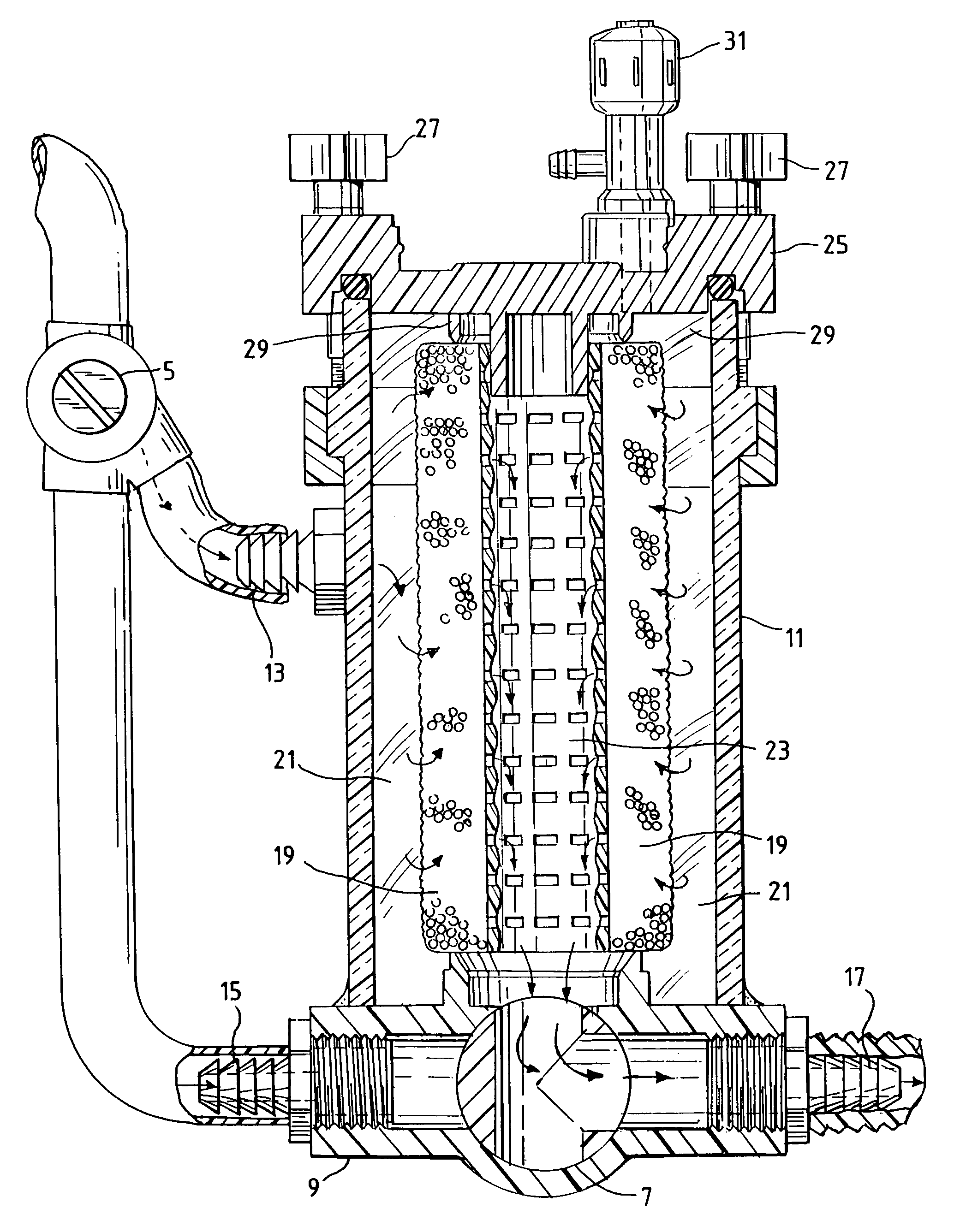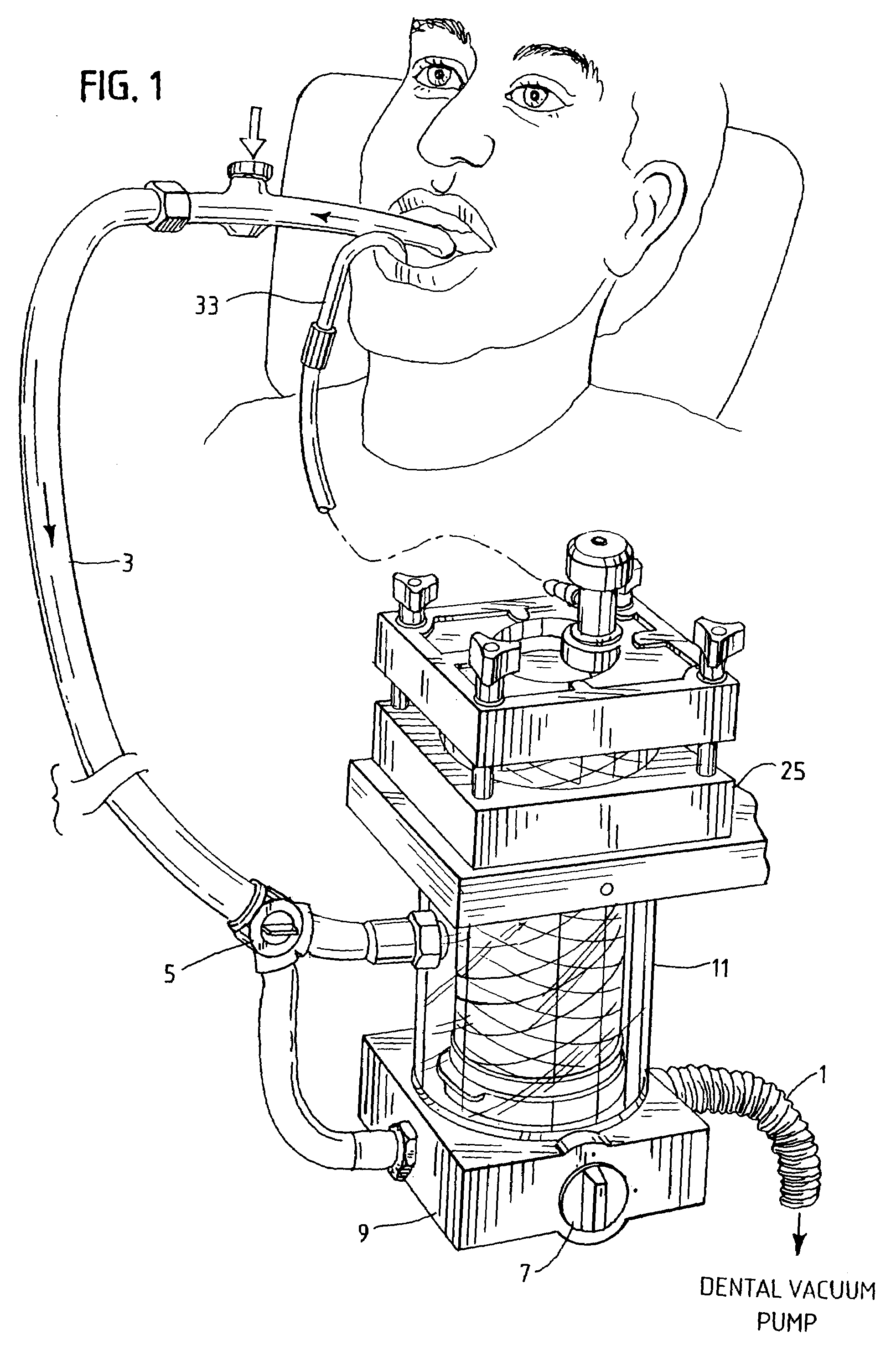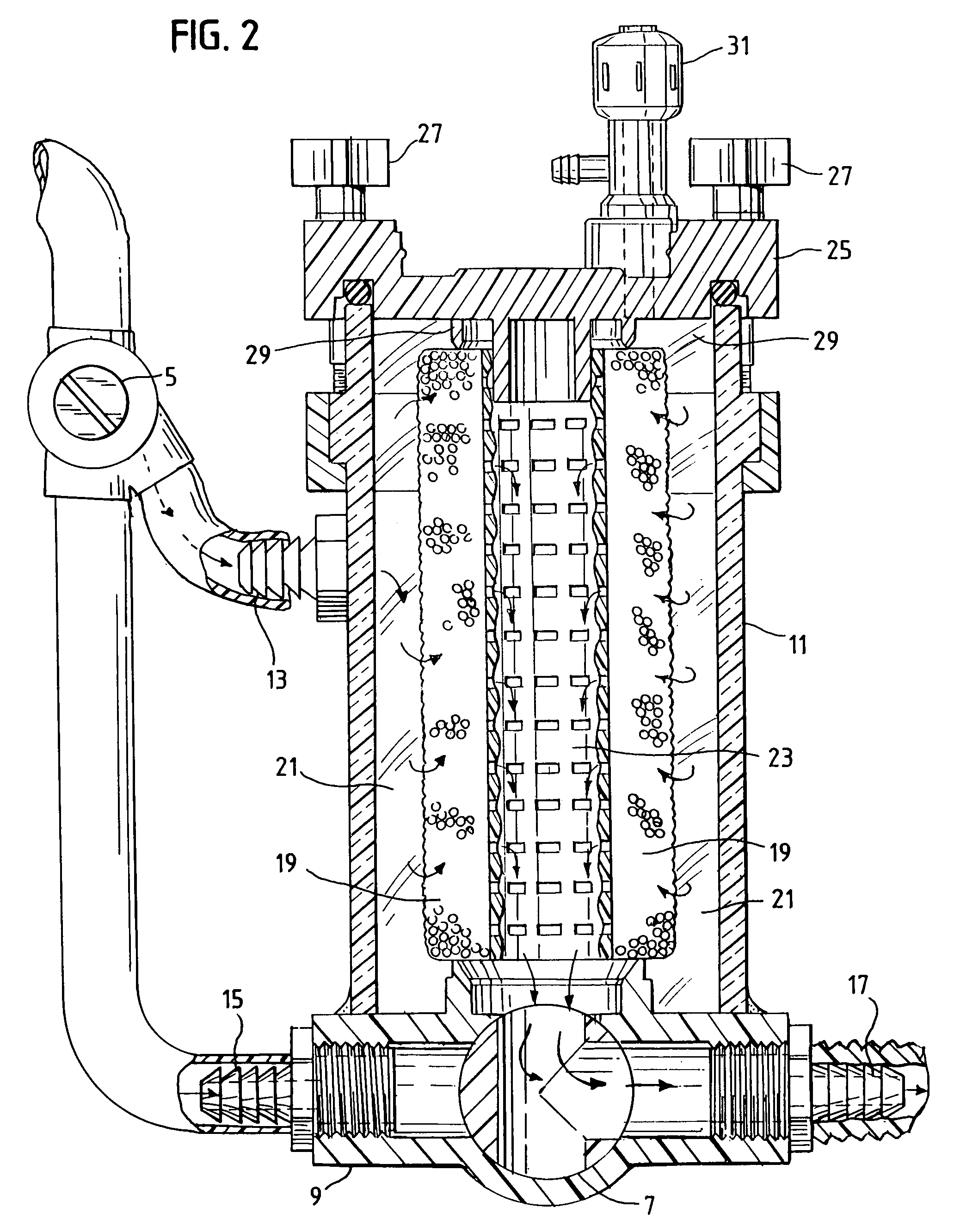Method and apparatus for removing particulate metals from dental waste water
a technology for dental waste water and particulate metals, applied in the direction of moving filter element filters, filtration separation, separation processes, etc., can solve the problems of amalgam waste sludge accumulation over time, significant environmental concerns, and relative high installation complexity, and achieve safe transportation and storage, safe disposal or recycling, and easy replacement.
- Summary
- Abstract
- Description
- Claims
- Application Information
AI Technical Summary
Benefits of technology
Problems solved by technology
Method used
Image
Examples
Embodiment Construction
[0012]Referring to FIG. 1, a preferred embodiment includes an apparatus placed at the dental chairside, in-line with a vacuum source 1 and the line from the dental patient 3. Dental waste-water can be collected in holding tanks and stored for later disposal. The apparatus contains a two-way inlet stop-cock 5 in-line with the line from the dental patient 3 and another two-way outlet stop-cock 7 in-line with the vacuum source 1. The size of apparatus may vary.
[0013]Referring to FIG. 2, a cross-sectional view of the apparatus is shown. The apparatus contains a filter assembly 19 that fits inside the outer container 11 forming two spaces, an outer lumen 21 and a central lumen 23. The outer lumen is in direct communication with the filter waste-water inlet port 13. The outer and central lumen are separated by filter material of the filter assembly 19 and therefore are indirectly in communication. The filter waste-water inlet port 13 receives waste-water to be filtered via an inlet stop-c...
PUM
| Property | Measurement | Unit |
|---|---|---|
| pore size | aaaaa | aaaaa |
| length | aaaaa | aaaaa |
| vacuum | aaaaa | aaaaa |
Abstract
Description
Claims
Application Information
 Login to View More
Login to View More - R&D
- Intellectual Property
- Life Sciences
- Materials
- Tech Scout
- Unparalleled Data Quality
- Higher Quality Content
- 60% Fewer Hallucinations
Browse by: Latest US Patents, China's latest patents, Technical Efficacy Thesaurus, Application Domain, Technology Topic, Popular Technical Reports.
© 2025 PatSnap. All rights reserved.Legal|Privacy policy|Modern Slavery Act Transparency Statement|Sitemap|About US| Contact US: help@patsnap.com



